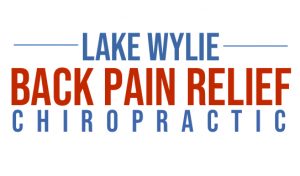Chiropractic has long described benefits that extend beyond pain relief and crisis management such as the concept of immune stimulation and overall well-being. But what is “wellness” and how does it fit in with the chiropractic model?
Interestingly, there is no single definition for the term “wellness.” Frequently, “wellness” is advertised on balloons, banners, billboards, in brochures, on marquees…. almost everywhere we look! So rather than searching for a strict definition, let’s consider the “concepts” of wellness. There is almost always a reference to “…a state of well-being” attached to the wellness concept. Another is “…quality of life enhancement.” Others describe wellness as “…an active process of becoming aware of and making choices toward a more successful existence.” This “process” includes improvement that is always positive; “aware” means continually seeking for more information about how we can improve; “choices” refers to selecting options that fit our best interests; and “successful existence” is determined by each individual’s life accomplishments.
We can discuss “dimensions of wellness” as it truly is multidimensional including (but not limited to): 1) Social Wellness; 2) Occupational Wellness; 3) Spiritual Wellness; 4) Physical Wellness; 5) Intellectual Wellness; 6) Emotional Wellness; 7) Environmental Wellness; 8) Financial Wellness; 9) Mental Wellness; and 10) Medical Wellness. One might say that occupational and environmental wellness directly influences personal wellness. We could simplify this by stating wellness falls into two broad categories: mental wellness and physical wellness. There seems to be an emphasis on the physical wellness part, overlooking the mental / emotional portion as fitness and chronic disease prevention seem to be the most talked about. In order to find “wellness” in our own lives or in others, due diligence in both areas is necessary. Some of us may not be physically fit or disease-free but that doesn’t mean we can’t strive for improving what we currently have. Wellness tools exist like: the “Wellness Wheel,” “Wellness Monitor,” “Wellness Assessment,” “Wellness Calendar,” “Sleep Wellness,” “Stress Wellness” (relaxation wellness techniques), “Women’s Wellness” (in exercise, nutrition and more), “Work Wellness” (time management is part of this), “Physical Activity” and “Protein Calculator,” and more. These can offer information and a way to monitor your “wellness.”
Of interest, the United States Department of Labor (Affordable Care Act and Wellness Programs – see http://www.dol.gov/ebsa/newsroom/fswellnessprogram.html) offers incentives “…to promote employer wellness programs and encourage opportunities to support healthier workplaces.” New programs include “participatory wellness programs” or workplace offered programs generally available without regard to an individual’s health status. Examples include fitness center fee reimbursement, monthly rewards for attendance, free health education seminars, as well as employee rewards for completing a health risk assessment. The rules also include incentives described as “health-contingent wellness programs,” which rewards participants for things like smoking cessation or reduction, weight and/or cholesterol lowering, and so on. Let’s continue this topic in part II!

